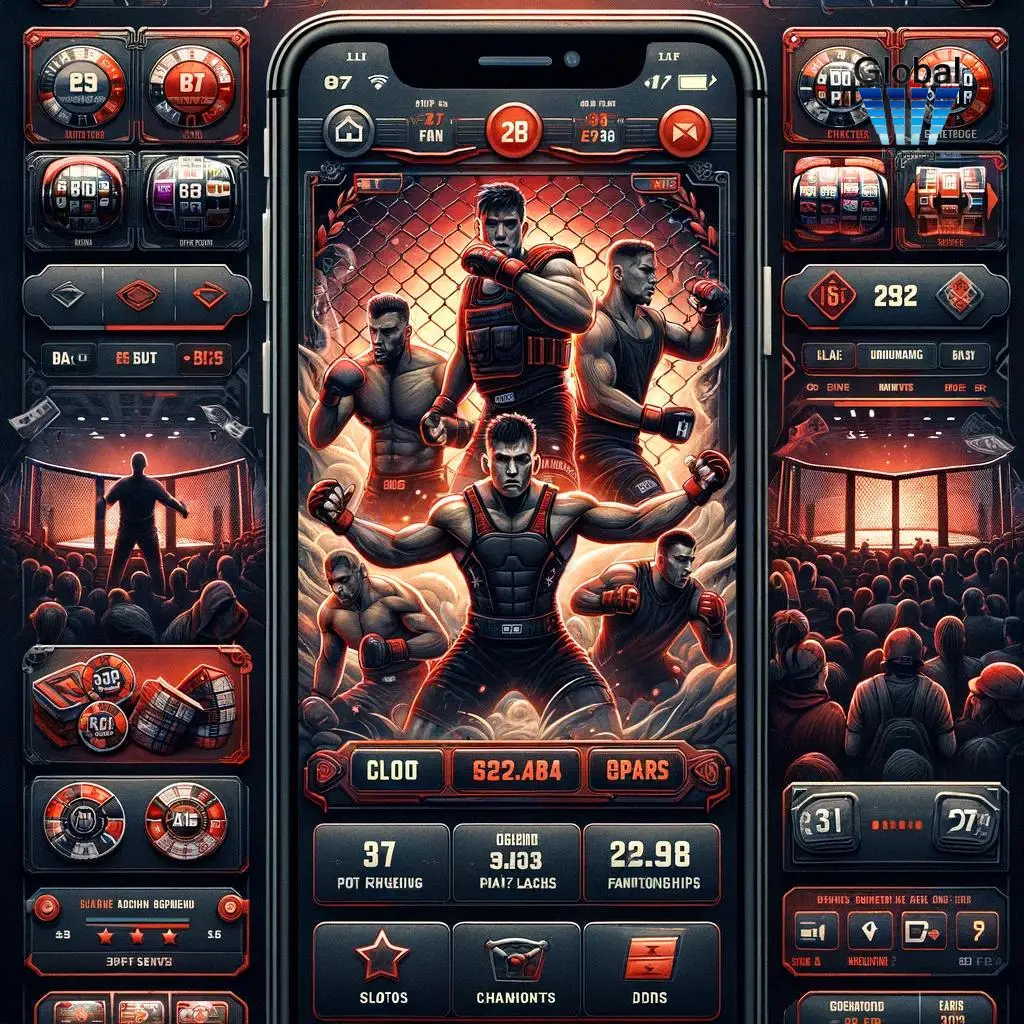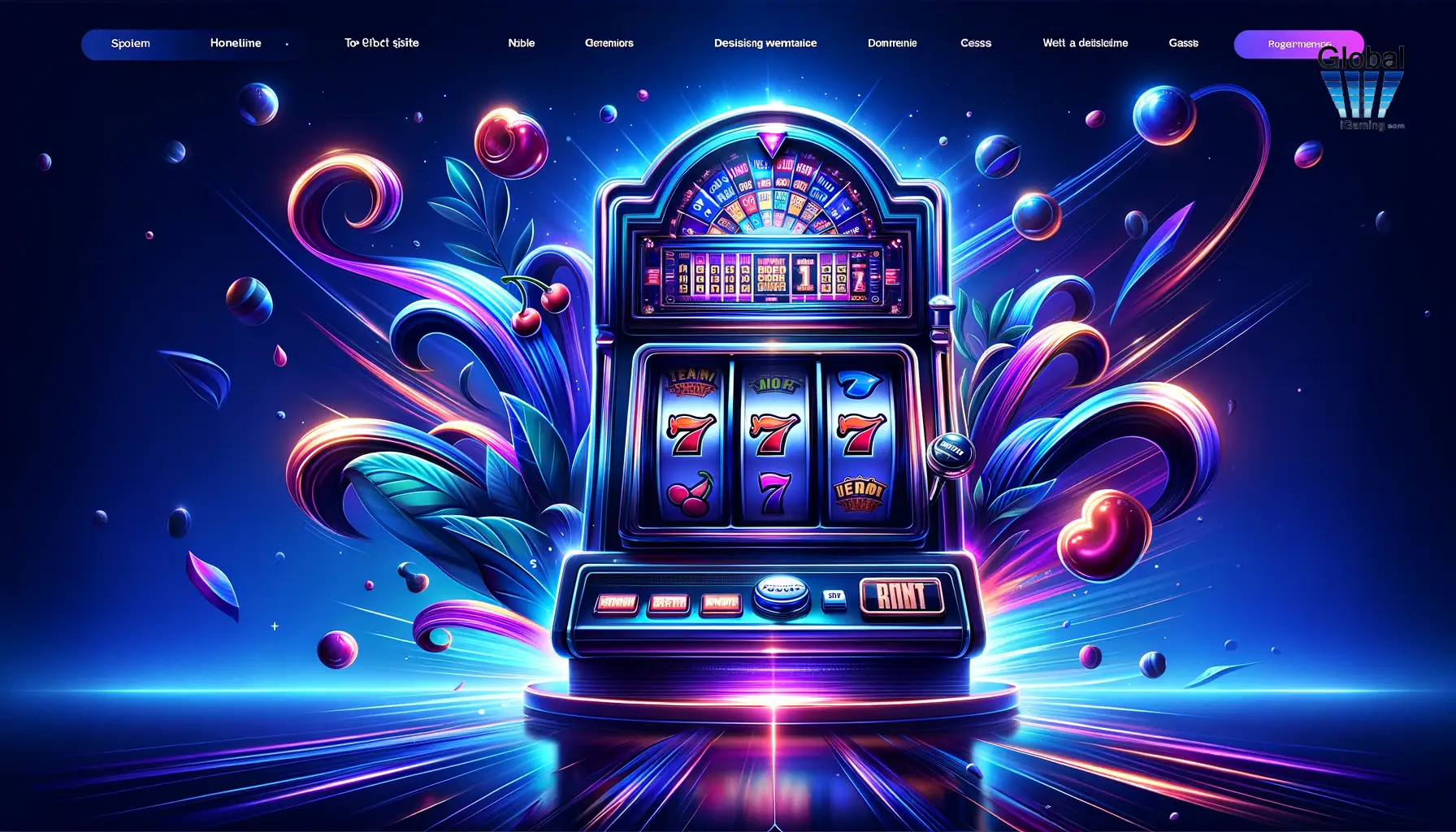Cacino.co.uk Betting, On-line Gambling Evaluations & News, Live On line casino, Slots, Blackjack Roulette, Keno & Extra
- Introduction
- The Importance of Choosing the Right Components for Your Project
- Understanding the Different Types of Components and Their Functions
- How to Identify and Troubleshoot Faulty Components
- The Pros and Cons of Using Brand Name vs. Generic Components
- Tips for Sourcing High-Quality Components at a Reasonable Price
- The Future of Component Technology: Trends and Predictions
- Common Mistakes to Avoid When Working with Components
- How to Build a Custom Component Library for Your Projects
- The Role of Components in IoT and Smart Home Systems
- Exploring the World of DIY Component Projects
- The Ethics of Component Manufacturing: Sustainability and Fair Labor Practices
- Q&A
- Conclusion
“Constructing blocks for innovation and progress.”
Introduction
components are the building blocks of any system or device. They are particular person parts that work collectively to create a purposeful complete. In electronics, elements can include resistors, capacitors, transistors, and built-in circuits. In mechanical systems, elements can include gears, bearings, and motors. Understanding the function and objective of every element is important for designing and building efficient systems.
The Significance of Selecting the Proper Components for Your Undertaking
When it involves any challenge, choosing the right elements is essential. Whether or not you're building a computer, designing a web site, or establishing a building, the elements you select will decide the success of your challenge. In this article, we'll discover the significance of choosing the right elements and how it can impression your challenge's end result.
Firstly, choosing the right elements ensures that your challenge will function correctly. For instance, if you're building a computer, choosing the right CPU, motherboard, and RAM will be sure that your computer runs easily and effectively. On the different hand, if you select elements which might be incompatible or not highly effective sufficient on your wants, your computer could expertise efficiency points and even fail to function altogether.
Secondly, choosing the right elements can save you time and cash in the long run. Whereas it could also be tempting to go for cheaper elements to economize upfront, this can usually result in more bills down the line. Cheaper elements might not be as sturdy or dependable as their more expensive counterparts, that means they could should be changed sooner. This may end up in additional costs and wasted time spent on repairs or replacements.
Thirdly, choosing the right elements also can impression the security of your challenge. For instance, if you're establishing a building, choosing high-quality supplies that meet security requirements is important to make sure the security of those that will be utilizing the building. Equally, if you're designing a web site that collects private info from customers, choosing secure elements similar to SSL certificates and firewalls is essential to guard person information from potential cyber assaults.
In addition to those sensible issues, choosing the right elements also can impression the aesthetics of your challenge. For instance, if you're designing a web site or creating a graphic design challenge, choosing visually interesting elements similar to fonts and coloration schemes can improve the general look and really feel of your challenge.
So how do you go about choosing the right elements on your challenge? Firstly, it's important to do your analysis. Take the time to read reviews and compare totally different options to find out which elements will greatest meet your wants. Moreover, take into account consulting with consultants in the area to get their suggestions and advice.
One other important issue to contemplate when choosing elements is compatibility. Make sure that each one of the elements you select are compatible with one another and with any present elements you could also be utilizing. This can assist stop points similar to efficiency problems or system crashes.
Lastly, don't be afraid to spend money on high-quality elements. Whereas they could be more expensive upfront, they'll save you time and cash in the long run by offering better efficiency, sturdiness, and reliability.
In conclusion, choosing the right elements is important for the success of any challenge. It could impression every part from performance and security to aesthetics and value-effectiveness. By doing all of your analysis, contemplating compatibility, and investing in high-quality elements, you can be sure that your challenge is a success.
Understanding the Different Types of Components and Their Features
Components are the building blocks of any electronic device. They are the particular person parts that make up a circuit and allow it to function correctly. Understanding the differing kinds of elements and their capabilities is important for anyone working with electronics.
There are many differing types of elements, but they are often broadly categorized into two teams: passive and active. Passive elements don't require an exterior power supply to function, whereas active elements do.
Passive elements include resistors, capacitors, and inductors. Resistors are used to restrict the circulate of current in a circuit. Capacitors store electrical power and launch it when wanted. Inductors store power in a magnetic area and might be used to filter out undesirable frequencies.
Energetic elements include transistors, diodes, and built-in circuits. Transistors are used to amplify or switch electronic alerts. Diodes allow current to circulate in only one path. Built-in circuits include a number of elements on a single chip and can carry out advanced capabilities.
Every element has its own unique function, but all of them work collectively to create a functioning circuit. For instance, a simple circuit would possibly consist of a battery, a resistor, and an LED. The battery provides power to the circuit, the resistor limits the circulate of current, and the LED emits gentle when current flows by way of it.
Components may also be categorized based on their bodily properties. Through-gap elements have leads which might be inserted into holes on a printed circuit board (PCB) and soldered in place. Floor-mount elements are smaller and don't have any leads; as an alternative, they're soldered instantly onto the floor of the PCB.
When designing a circuit, it is important to decide on the right elements for the job. Components similar to value, availability, and efficiency have to be taken into account. For instance, if a circuit requires high-velocity switching, a transistor with a fast switching velocity could also be crucial.
In addition to choosing the right elements, it can be important to grasp how they work together with one another. Components can have an effect on one another's efficiency, and improper use can result in circuit failure. For instance, if a capacitor is connected backwards, it may cause the circuit to malfunction.
In conclusion, elements are the building blocks of any electronic device. Understanding the differing kinds of elements and their capabilities is important for anyone working with electronics. Passive elements include resistors, capacitors, and inductors, whereas active elements include transistors, diodes, and built-in circuits. Components may also be categorized based on their bodily properties, similar to by way of-gap or floor-mount. When designing a circuit, it is important to decide on the right elements for the job and perceive how they work together with one another.
The right way to Determine and Troubleshoot Defective Components
When it involves troubleshooting electronic devices, figuring out and fixing defective elements is a essential step. Components are the building blocks of any electronic device, and they are often accountable for a extensive range of points. In this article, we will focus on how to determine and troubleshoot defective elements.
The first step in figuring out defective elements is to grasp the differing kinds of elements which might be used in electronic devices. There are many differing types of elements, including resistors, capacitors, diodes, transistors, and built-in circuits. Every element has a specific function and might be accountable for differing kinds of points.
One frequent subject that may be prompted by defective elements is a device that won't turn on. This may be prompted by a quantity of totally different elements, including the power provide, the motherboard, or the processor. To troubleshoot this subject, you will want to check every element individually to find out which one is inflicting the downside.
One other frequent subject that may be prompted by defective elements is a device that's operating slowly or freezing up. This may be prompted by a quantity of totally different elements, including the reminiscence, the hard drive, or the graphics card. To troubleshoot this subject, you will want to check every element individually to find out which one is inflicting the downside.
To check elements, you will want to make use of specialised instruments and equipment. One frequent device used for testing elements is a multimeter. A multimeter is a device that may measure voltage, current, and resistance. By utilizing a multimeter, you can check every element to find out if it is functioning correctly.
When testing elements, it is important to comply with correct security procedures. At all times make sure that the device is unplugged and that you are carrying acceptable security gear. Moreover, make sure that you are acquainted with the specific procedures for testing every type of element.
As soon as you have recognized a defective element, you will want to switch it. This may be done by buying a alternative element and putting in it yourself, or by taking the device to a professional restore shop. If you are changing the element yourself, make sure that you comply with correct set up procedures to keep away from inflicting additional injury to the device.
In conclusion, figuring out and troubleshooting defective elements is an important half of repairing electronic devices. By understanding the differing kinds of elements and utilizing specialised instruments and equipment, you can rapidly and easily determine the supply of the downside. As soon as you have recognized a defective element, make sure that you comply with correct security procedures and set up procedures to make sure that the device is repaired correctly. With these tips in mind, you can efficiently troubleshoot and restore electronic devices with defective elements.
The Pros and Cons of Using Brand Title vs. Generic Components
When it involves building or repairing electronic devices, one of the most important choices you'll make is whether or not to make use of model name or generic elements. Both options have their advantages and disadvantages, and it's important to weigh them rigorously before making a determination.
Brand name elements are these which might be manufactured by well-identified companies similar to Intel, Samsung, and Apple. These elements are sometimes more expensive than their generic counterparts, but they arrive with a quantity of advantages. For one factor, model name elements are usually of increased quality than generics. They're made with better supplies and endure more rigorous testing to make sure that they meet strict requirements for efficiency and reliability.
One other benefit of model name elements is that they usually come with warranties or ensures. If one thing goes flawed with a model name element, you can normally get it changed or repaired without charge to you. This may be a huge reduction if you're engaged on a challenge that requires expensive or hard-to-discover elements.
On the different hand, there are additionally some downsides to utilizing model name elements. For one factor, as talked about earlier, they are typically more expensive than generics. This may be a important issue if you're engaged on a tight budget or if you want to purchase a massive quantity of elements.
One other potential drawback of model name elements is that they might not be compatible with different parts of your device. For instance, if you're building a computer and you use an Intel processor, you may have to make use of different Intel elements in order to make sure that every part works collectively correctly. This could restrict your options and make it more difficult to seek out the right elements on your challenge.
Generic elements, on the different hand, are these which might be manufactured by companies that are not as well-generally known as the big brands. These elements are sometimes cheaper than their model name counterparts, which might be a big benefit if you're engaged on a tight budget.
One other benefit of generic elements is that they're usually more extensively out there than model name elements. This could make it easier to seek out the parts you want, particularly if you're engaged on a challenge that requires a lot of totally different elements.
Nevertheless, there are additionally some downsides to utilizing generic elements. For one factor, they might not be of the similar quality as model name elements. They could also be made with cheaper supplies or could not endure the similar rigorous testing as their model name counterparts.
One other potential drawback of generic elements is that they might not be as dependable as model name elements. They could also be more liable to failure or could not last as long, which might be a downside if you're building a device that must be sturdy and long-lasting.
In conclusion, there are pros and cons to utilizing each model name and generic elements. Finally, the determination of which to make use of will rely in your specific wants and budget. If you're engaged on a challenge that requires high-quality, dependable elements and you have the budget to afford them, then model name elements could also be the way to go. Nevertheless, if you're engaged on a tight budget or want to seek out parts rapidly and easily, then generic elements could also be a better choice. No matter you determine, make sure to do your analysis and select elements that will meet your wants and assist you obtain your targets.
Suggestions for Sourcing Excessive-High quality Components at a Affordable Worth
When it involves manufacturing merchandise, sourcing high-quality elements at a affordable price is essential. The elements used in a product can enormously have an effect on its general quality and efficiency, so it's important to decide on properly. Listed below are some tips for sourcing high-quality elements with out breaking the bank.
Firstly, do your analysis. Earlier than making any purchases, take the time to analysis totally different suppliers and producers. Look for reviews and ratings from different customers to get an idea of their status and reliability. It's also possible to check business publications and forums for suggestions and advice.
Subsequent, take into account the supplies used in the elements. Excessive-quality supplies will usually end in better efficiency and sturdiness, but they'll additionally come with a increased price tag. It's important to strike a balance between quality and value. Look for supplies which might be identified for their reliability and longevity, but additionally take into account different supplies which may be more affordable with out sacrificing an excessive amount of quality.
One other important issue to contemplate is the provider's manufacturing process. A provider that makes use of superior expertise and equipment is more more likely to produce high-quality elements than one which depends on outdated strategies. Moreover, suppliers which have strict quality control measures in place are more more likely to catch any defects or points before they make it into your product.
When sourcing elements, it's additionally important to contemplate the provider's location. Selecting a provider that's situated nearer to your manufacturing facility can assist cut back delivery costs and lead times. Nevertheless, don't let location be the only consider your determination-making process. It's more important to decide on a provider that may provide high-quality elements at a affordable price, even when they're situated additional away.
Lastly, don't be afraid to barter with suppliers. Many suppliers are keen to supply reductions or decrease prices if you order in bulk or set up a long-time period relationship with them. Nevertheless, be sure to barter in a professional method and don't push too hard for unrealistic reductions.
In conclusion, sourcing high-quality elements at a affordable price is important for manufacturing high-quality merchandise. By doing all of your analysis, contemplating supplies and manufacturing processes, choosing the right location, and negotiating with suppliers, you can discover the elements you want with out breaking the bank. Remember to prioritize quality over value, but even be conscious of your budget and don't overspend unnecessarily. With these tips in mind, you can supply the greatest elements on your merchandise and guarantee their success in the market.
The Future of Element Technology: Trends and Predictions
Element expertise has come a long way since its inception, and it continues to evolve at a speedy tempo. As we glance in the direction of the future, there are a number of traits and predictions which might be shaping the way we take into consideration elements and their function in numerous industries.
One of the most important traits in element expertise is the transfer in the direction of miniaturization. As devices develop into smaller and more compact, the elements that power them should additionally shrink in measurement. This development is especially evident in the electronics business, the place elements similar to microprocessors and reminiscence chips are becoming more and more smaller and more highly effective.
One other development that's shaping the future of element expertise is the rise of modular design. Modular elements are designed to be easily interchangeable, permitting for higher flexibility and customization in product design. This development is especially related in industries similar to aerospace and automotive, the place modular elements might be used to rapidly and easily change broken or worn parts.
In addition to miniaturization and modular design, there's additionally a rising concentrate on sustainability in element expertise. As shoppers develop into more environmentally acutely aware, there's a higher demand for elements which might be power-environment friendly and constituted of sustainable supplies. This development is especially related in industries similar to development and transportation, the place sustainable elements can assist cut back power consumption and carbon emissions.
One other prediction for the future of element expertise is the continued development of the Web of Things (IoT). The IoT refers to the network of interconnected devices which might be in a position to talk with one another and exchange information. As more devices develop into connected to the internet, there will be a higher demand for elements which might be in a position to support this connectivity. This consists of elements similar to sensors, wi-fi communication modules, and microcontrollers.
Lastly, there's additionally a rising concentrate on security in element expertise. As more devices develop into connected to the internet, there's a higher risk of cyber assaults and information breaches. This has led to an elevated demand for elements which might be in a position to provide strong security features, similar to encryption and authentication.
In conclusion, the future of element expertise is formed by a number of key traits and predictions. These include miniaturization, modular design, sustainability, the development of the IoT, and a concentrate on security. As these traits continue to evolve, we are able to anticipate to see new and progressive elements which might be in a position to meet the altering wants of numerous industries. Whether or not it's in electronics, aerospace, development, or transportation, element expertise will continue to play a very important function in shaping the merchandise and services of the future.
Common Errors to Avoid When Working with Components
When it involves building software applications, elements are a necessary half of the process. They are pre-constructed items of code that may be reused throughout totally different tasks, saving time and effort. Nevertheless, working with elements might be tough, and there are some frequent errors that developers make that may result in problems down the line. In this article, we will focus on some of these errors and how to keep away from them.
The first mistake that developers usually make when working with elements will not be understanding their objective. Components are designed to be reusable, modular items of code that may be used throughout totally different tasks. They will not be meant to be standalone applications or features. Due to this fact, it is important to grasp how a element suits into the bigger picture of the application and how it interacts with different elements.
One other mistake that developers make will not be correctly testing their elements. Components must be totally examined before they're built-in into an application. This consists of unit testing, integration testing, and finish-to-finish testing. Testing ensures that the element works as anticipated and does not introduce any bugs or points into the application.
A 3rd mistake that developers make will not be correctly documenting their elements. Documentation is important for understanding how a element works and how it must be used. It additionally helps different developers who could have to work with the element in the future. Documentation ought to include info on how to make use of the element, its objective, any dependencies it has, and any identified points or limitations.
One other frequent mistake will not be correctly versioning elements. Versioning is important as a result of it permits developers to track adjustments to a element over time. That is particularly important when a number of developers are engaged on a challenge or when a challenge is being maintained over a long interval of time. Versioning additionally permits developers to roll again to a earlier version of a element if crucial.
Lastly, developers usually make the mistake of not correctly sustaining their elements. Components must be recurrently up to date and maintained to make sure they continue to work as anticipated and don't introduce any security vulnerabilities. This consists of updating dependencies, fixing bugs, and addressing any identified points or limitations.
In conclusion, working with elements might be a highly effective device for building software applications. Nevertheless, it is important to keep away from frequent errors similar to not understanding their objective, not correctly testing or documenting them, not correctly versioning them, and not correctly sustaining them. By following these greatest practices, developers can be sure that their elements are dependable, reusable, and contribute to the general success of the application.
The right way to build a Custom Element Library for Your Initiatives
Constructing a customized element library on your tasks can save you time and effort in the long run. By creating a library of reusable elements, you can easily and rapidly construct new tasks with out having to start from scratch each time. In this article, we will focus on the elements that make up a customized element library and how to create them.
The first element you will have to create is the button element. Buttons are a necessary half of any person interface, and having a constant style throughout your tasks is important. When creating your button element, take into account the totally different states it could have, similar to hover and active, and be sure that it is easily customizable.
Subsequent, you will have to create a form element. Types are used to collect info from customers and are a essential half of many applications. When creating your form element, take into account the differing kinds of form components you may have, similar to textual content inputs, checkboxes, and radio buttons. Make sure that your form element is easily customizable and can deal with totally different form layouts.
One other important element to include in your library is the navigation element. Navigation is how customers transfer around your application, and having a constant navigation style throughout your tasks can enhance person expertise. When creating your navigation element, take into account the differing kinds of navigation you may have, similar to a top bar or side menu. Make sure that your navigation element is easily customizable and can deal with totally different navigation buildings.
The fourth element to include in your library is the modal element. Modals are used to show info or immediate customers for enter in a non-intrusive way. When creating your modal element, take into account the differing kinds of modals you may have, similar to confirmation modals or informational modals. Make sure that your modal element is easily customizable and can deal with totally different modal content material.
Lastly, you will have to create a typography element. Typography is a necessary half of any person interface and can enormously impression the general look and really feel of your application. When creating your typography element, take into account the differing kinds of textual content types you may have, similar to headings, physique textual content, and captions. Make sure that your typography element is easily customizable and can deal with totally different font households and sizes.
When creating your customized element library, it is important to make sure that every element is easily customizable and can deal with totally different use cases. Think about using a CSS preprocessor similar to Sass or Less to make customization easier. Moreover, take into account creating documentation for every element to make it easier for different developers to make use of your library.
In conclusion, building a customized element library on your tasks can save you time and effort in the long run. By including important elements similar to buttons, kinds, navigation, modals, and typography, you can easily and rapidly construct new tasks with out having to start from scratch each time. Make sure that every element is easily customizable and think about using a CSS preprocessor and creating documentation to make it easier for different developers to make use of your library.
The Role of Components in IoT and Sensible Home Techniques
The Web of Things (IoT) and good residence systems have revolutionized the way we work together with our properties and the world around us. These systems are made up of numerous elements that work collectively seamlessly to provide us with a more handy and environment friendly way of life.
One of the most important elements in IoT and good residence systems is sensors. Sensors are devices that detect adjustments in the surroundings and ship alerts to different elements in the system. For instance, a temperature sensor can detect adjustments in temperature and ship a sign to the thermostat to regulate the temperature accordingly. Sensors are important for creating a responsive and clever system that may adapt to our wants.
One other important element in IoT and good residence systems is actuators. Actuators are devices that may carry out bodily actions based on alerts received from different elements in the system. For instance, an actuator can open or close a door, turn on or off a gentle, or regulate the place of a window blind. Actuators are important for creating a system that may work together with the bodily world around us.
Connectivity can be a essential element in IoT and good residence systems. Connectivity refers to the means of totally different elements in the system to speak with one another and with exterior devices. This communication can take place by way of wired or wi-fi connections, similar to Wi-Fi, Bluetooth, or Zigbee. Connectivity is important for creating a system that may be managed remotely and can work together with different devices in the residence or outdoors.
Processing power is another crucial element in IoT and good residence systems. Processing power refers to the means of the system to process information and make choices based on that information. This processing power can come from numerous sources, similar to microcontrollers, processors, or cloud-based services. Processing power is important for creating a system that may analyze information from sensors and make choices based on that information.
User interfaces are additionally an important element in IoT and good residence systems. User interfaces seek advice from the way in which customers work together with the system. This could include bodily interfaces, similar to buttons or touchscreens, or virtual interfaces, similar to mobile apps or voice assistants. User interfaces are important for creating a system that's easy to make use of and might be custom-made to fulfill the wants of particular person customers.
Lastly, security is a crucial element in IoT and good residence systems. Safety refers to the measures taken to guard the system from unauthorized access or malicious assaults. This could include encryption, authentication, and access control. Safety is important for creating a system that's safe and secure for customers to make use of.
In conclusion, IoT and good residence systems are made up of numerous elements that work collectively seamlessly to provide us with a more handy and environment friendly way of life. These elements include sensors, actuators, connectivity, processing power, person interfaces, and security. Every of these elements plays a essential function in creating a responsive and clever system that may adapt to our wants and make our lives easier. As these systems continue to evolve, it is important to grasp the function of every element and how they work collectively to create a really good residence.
Exploring the World of DIY Element Initiatives
DIY element tasks are a nice way to discover the world of electronics and be taught how to construct your own devices. These tasks can range from simple circuits to advanced systems, and they are often a lot of fun to work on. Nevertheless, before you dive into a DIY element challenge, it's important to grasp the totally different elements that you'll be working with.
One of the most primary elements in electronics is the resistor. Resistors are used to restrict the circulate of current in a circuit, and they arrive in a variety of values. When choosing a resistor on your challenge, you'll want to contemplate the resistance value, power score, and tolerance.
One other important element is the capacitor. Capacitors store electrical power and launch it when wanted. They come in numerous sorts, including ceramic, electrolytic, and tantalum capacitors. When choosing a capacitor on your challenge, you'll want to contemplate the capacitance value, voltage score, and tolerance.
Transistors are another key element in electronics. They are used to amplify or switch electronic alerts. There are two fundamental sorts of transistors: bipolar junction transistors (BJTs) and area-impact transistors (FETs). When choosing a transistor on your challenge, you'll want to contemplate the type, voltage score, current score, and gain.
Diodes are additionally important elements in electronics. They allow current to circulate in a single path only and are used in rectifiers and voltage regulators. There are a number of sorts of diodes, including zener diodes, Schottky diodes, and gentle-emitting diodes (LEDs). When choosing a diode on your challenge, you'll want to contemplate the type, voltage score, current score, and ahead voltage drop.
Built-in circuits (ICs) are advanced elements that include a number of transistors, resistors, capacitors, and different elements on a single chip. They are used in a extensive range of electronic devices, including computer systems, smartphones, and televisions. When choosing an IC on your challenge, you'll want to contemplate the type, pin count, voltage score, and current score.
In addition to those elements, there are lots of different elements that you could encounter in DIY element tasks. These include inductors, transformers, relays, and sensors. Every of these elements has its own unique properties and makes use of.
When engaged on a DIY element challenge, it's important to have a good understanding of the elements you'll be utilizing. This will assist you choose the right elements on your challenge and be sure that your circuit capabilities correctly. It's additionally important to comply with correct security procedures when working with electronics, including carrying protecting gear and avoiding contact with dwell circuits.
In conclusion, DIY element tasks are a nice way to discover the world of electronics and be taught how to construct your own devices. Understanding the totally different elements that you'll be working with is important for achievement in these tasks. By choosing the right elements and following correct security procedures, you can create circuits that function correctly and obtain your required results. So why not start exploring the world of DIY element tasks today?
The Ethics of Element Manufacturing: Sustainability and Truthful Labor Practices
The manufacturing of elements is a essential side of many industries, from electronics to automotive. Nevertheless, the ethics of element manufacturing have come underneath scrutiny lately, significantly with reference to sustainability and fair labor practices.
Sustainability is a key concern in element manufacturing, as the manufacturing of elements usually entails the use of non-renewable resources and can generate important quantities of waste. To deal with these points, many producers are implementing sustainable practices similar to utilizing renewable power sources, lowering waste by way of recycling and reusing supplies, and designing merchandise with a concentrate on longevity and repairability.
In addition to environmental sustainability, fair labor practices are additionally a crucial element of moral element manufacturing. Many elements are produced in growing countries the place labor legal guidelines could also be much less stringent, resulting in considerations about employee exploitation and unsafe working conditions. To combat these points, some producers are implementing fair labor practices similar to offering safe working conditions, paying fair wages, and prohibiting little one labor.
Nevertheless, making certain sustainability and fair labor practices in element manufacturing might be difficult. Producers should balance the want for profitability with moral issues, and could face strain from shoppers and shareholders to prioritize value-chopping measures over sustainability and fair labor practices.
To deal with these challenges, some producers are turning to 3rd-party certifications similar to the Forest Stewardship Council (FSC) or Truthful Commerce Licensed to show their dedication to sustainability and fair labor practices. These certifications provide shoppers with assurance that the merchandise they're buying have been produced in an moral method.
One other method is for producers to work intently with their suppliers to make sure that sustainability and fair labor practices are being upheld all through the provide chain. This could contain conducting regular audits of suppliers' services and processes, offering coaching on sustainable and moral practices, and collaborating with suppliers to develop more sustainable merchandise.
Finally, the ethics of element manufacturing require a holistic method that considers not only environmental sustainability and fair labor practices but additionally the financial viability of the business. Producers should balance these competing priorities to make sure that they're producing elements which might be each moral and worthwhile.
In conclusion, the ethics of element manufacturing are a advanced and multifaceted subject that requires cautious consideration of sustainability and fair labor practices. Whereas there are challenges to implementing moral practices in this business, producers can take steps similar to implementing sustainable practices, working with suppliers, and acquiring third-party certifications to show their dedication to moral manufacturing. By prioritizing sustainability and fair labor practices, producers cannot only enhance their status but additionally contribute to a more simply and sustainable world economic system.
Q&A
1. What are elements?
Components are parts or components that make up a bigger system or product.
2. What is the objective of elements?
Components serve to provide specific capabilities or features inside a bigger system or product.
3. What are some examples of elements?
Examples of elements include resistors, capacitors, transistors, and built-in circuits in electronics, as well as wheels, engines, and brakes in vehicles.
4. How are elements manufactured?
Components might be manufactured by way of numerous processes similar to injection molding, stamping, and machining.
5. What is the significance of choosing the right elements?
Deciding on the right elements is important to make sure that the system or product capabilities correctly and meets its meant specs.
6. How do elements have an effect on the efficiency of a system or product?
The quality and efficiency of elements can instantly impression the general efficiency and reliability of a system or product.
7. What is element testing?
Element testing entails evaluating particular person elements to make sure they meet their meant specs and function correctly.
8. What is element integration?
Element integration entails combining particular person elements into a bigger system or product.
9. What is element compatibility?
Element compatibility refers to the means of totally different elements to work collectively successfully inside a system or product.
10. How do developments in expertise impression the improvement of new elements?
Developments in expertise can result in the improvement of new and improved elements with enhanced performance and efficiency.
11. What is the future outlook for element improvement?
The long run outlook for element improvement is promising, with continued developments in expertise resulting in the creation of more superior and environment friendly elements for numerous industries and applications.
Conclusion
Components are important parts of any system or device that work collectively to realize a specific function. They might be {hardware} or software, and their correct functioning is essential for the general efficiency of the system. Components can fluctuate in complexity and measurement, from simple resistors to advanced microprocessors. The choice and integration of elements are crucial in designing environment friendly and dependable systems. In conclusion, elements play a very important function in the improvement and operation of numerous systems, and their correct choice and integration are essential for attaining optimum efficiency.































































































































